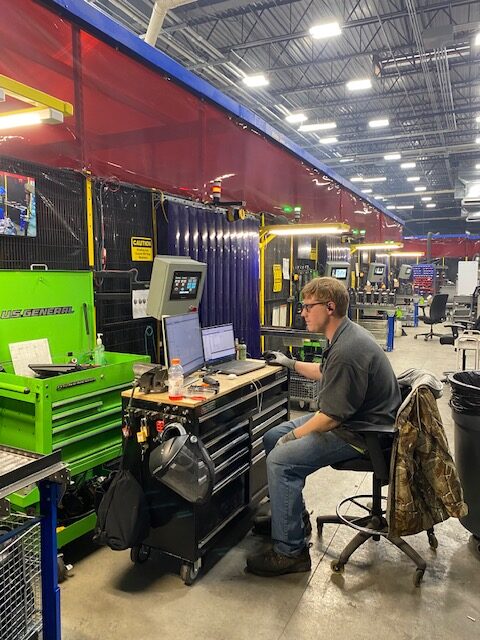With the need for robotics growing in manufacturing – especially highly skilled trades such as welding – this question comes to the forefront more and more: Is a robot going to take my job? Welders especially wonder if a robot is going to take their job.
The short answer is “no.”
The long answer is also “no.” Here is why welders shouldn’t worry about a robot taking their job:
- Welders are In-Demand
According to the American Welding Society in 2024, there will be nearly 400,000 welding jobs that need filled. That is roughly the equivalent of the entire population of Iceland. Additionally, AWS predicts this number will continue to climb by nearly 90,000 each year. Only about half that number of people enter into welding apprenticeships and training programs each year, according to the U.S. Department of Labor. The problem is real and only getting worse.
Bottom Line: If you are a welder, your skills will always be in demand. There simply aren’t enough of you.
2. Welders Tackle Complex Products and Processes
Simple welding operations that are monotonous and boring can be absorbed by your robot and that leaves the specialized, more complicated tasks for the scarce number of human welders.
Bottom Line: If you are a welder, your skills will be needed for complex and interesting work.
3. Welders Will Have Job Security – and Growth Opportunities
When you’re able to increase your throughput and productivity, the company thrives. When the company thrives, so does your career and your job security. Introducing robots into the workplace also creates opportunities for advancement into roles like a Robot Welding Manager. Moreover, your company needs to service your customers as they grow, because if you don’t your competition will. As human welders disappear, you need robots to step in so you can keep your customers and keep your business.
Bottom Line: Companies don’t award a bonus or a promotion to a robot, they award bonuses and promotions to people, and these productive people fuel growth.
Yaskawa is known as one of the world’s largest manufacturers of robotic automation systems and has noted that the welder shortage has influenced the decision for many companies to add robotics to their production lines.
“Robotics were once a technology imagined and used for Fortune 500 companies with big assembly lines, but robotic automation is now a necessity for most small, medium and large businesses alike to keep competitive,” shares Josh Leath, Senior Product Manager at Yaskawa.
One of the fastest and easiest ways to integrate a cell into your facility is through a Robots-as-a-Service (RaaS) agreement. This is a subscription-based agreement that allows you to leverage the productivity of a robot without having to make a capital investment or hire a programmer. RaaS organizations push updates to your cell, monitor your output, and can remotely troubleshoot if issues pop up. Even better, RaaS robot providers often pause your payment if your robot stops working. So if your cell isn’t producing, you aren’t paying.
The question shouldn’t be “Is a robot going to take my welding job?” but instead it should be “How quickly can I get a robot on my production line?” because once you do, you begin to secure your future.
Learn more about our AW-3 welding robot here.

Receive insights and updates in your inbox twice a month by subscribing to our newsletter, Spark & Fusion. Click here to be in the know!
About Path Robotics
Path Robotics provides technology that supports skilled trades.
